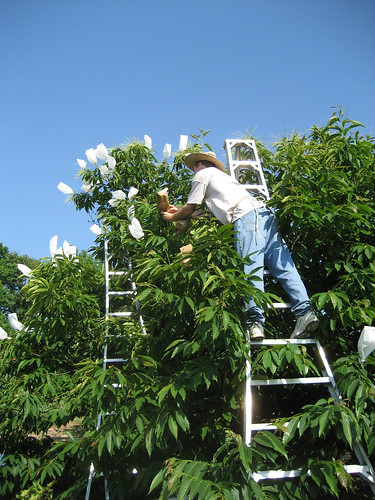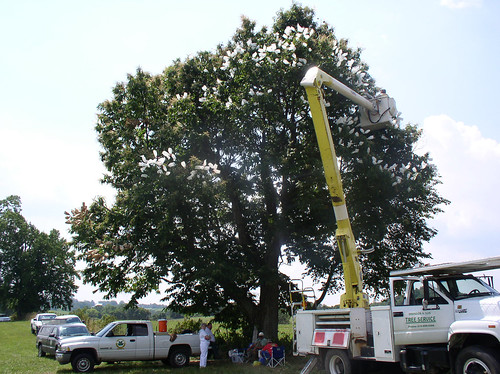
Nature has transformers! With time and the help of bees, butterflies, birds and other critters, some flowers change into seeds. Sometimes, flowers in trees transform into nuts.
But sometimes these transformers need help. That’s where a Conservation Innovation Grant from USDA’s Natural Resources Conservation Service to The American Chestnut Foundation came into play.
The foundation competed for and was awarded a grant from NRCS to plant and grow genetically diverse, blight-resistant chestnuts and other high quality hardwoods to reintroduce and maintain forests on reclaimed mine sites in Appalachia. The American chestnut trees were once common, but, nearly vanished from the landscape because of an accidentally introduced fungus in the late 1800s.
Part of this maintenance includes helping the tree become pollinated. No, the foundation’s staff and volunteers don’t fly. But they do rely on ladders and bucket trucks to aid them in reaching these chestnut tree flowers.
Imagine helping these American chestnuts flower by flower, tree by tree! The foundation uses “Lawson pollinating bags” to keep unwanted pollen away from chestnut tree flowers. Some corn farmers are familiar with these wax-covered paper bags, using them for similar, protected pollinations.
These bags are placed over female flowers before they become receptive to pollen. Once they open and are receptive to pollen, foundation workers remove the bags, hand-apply the chestnut cross-pollen, and replace the bags over the flowers. Foundation workers even label the bags to identify the chestnut cross-pollen they use. By applying cross-pollen, the Foundation helps these chestnuts fight against the deadly fungus.

Pollinators have a tough, vital role in supporting our ecosystem. In this case, pollinating American chestnuts requires helping hands.
This is one effort the foundation is using to restore the American chestnut. The purpose of the grant program, which helps fund this effort of the foundation, is to stimulate the development and adoption of innovative conservation approaches and technologies.
Plus, the grant program leverages the federal investment in environmental enhancement and protection to also enhance agricultural production. Grants are available to non-federal governmental or non-governmental organizations, tribes, or individuals. Learn more about Conservation Innovation Grants.
To get started with NRCS, visit your local USDA Service Center or www.nrcs.usda.gov/GetStarted.

